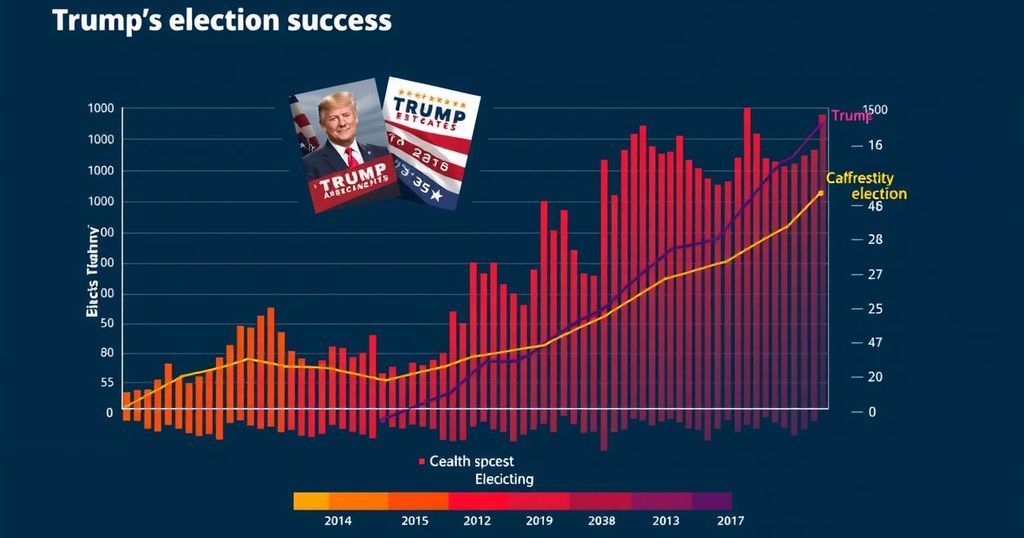Analysis of Donald Trump’s Election Victory: Key Factors and Future Implications

Donald Trump’s recent electoral victory can be attributed to factors such as low approval ratings for President Joe Biden, shifts in demographic support, and strategic gains in suburban and rural areas. Despite the Republican success, the narrow margins and historical patterns imply that voter preferences remain volatile and subject to change.
In the aftermath of the recent electoral victory of Donald Trump, it is imperative to analyze the multiple factors that contributed to this outcome. Vice President Kamala Harris, who took over the campaign from President Joe Biden, faced significant challenges stemming from the Biden administration’s unpopularity, with an approval rating of 39%. Historically, since Richard Nixon’s time, presidents whose approval ratings fell below 50% have consistently lost reelection bids. Additionally, consumer sentiment, as measured by the University of Michigan’s monthly survey—which was at 70.1 under Biden—indicates that low consumer confidence correlates with electoral defeat. Inflation, which soared to a 40-year high in 2022, has had a global impact on incumbents, as evidenced by similar declines in approval ratings among leaders of other G-7 countries. Despite some minor improvements in demographics, such as Black women and college-educated white women, Harris generally struggled to connect across a wider voter base. In contrast, Trump’s appeal extended to several demographic groups that exhibited increased support for him compared to previous elections. Particularly notable was his performance with Latino voters, who shifted from a 23-point backing of Biden to a 12-point endorsement of Trump. Furthermore, his standing among younger voters demonstrated a significant change, marking the best performance for a Republican presidential nominee in two decades. Geographically, Trump made considerable gains in rural areas and suburbs, the latter being an area that had favored Biden in 2020. The shift in suburban support swung from a two-point Biden victory to a four-point Trump lead, despite the prevailing sentiment among these voters favoring legal abortion. It is important to note that, contrary to expectations, voters advocating for abortion rights did not exclusively support the Democratic candidate in this election. While one might consider a celebratory response for the Republican party, it is crucial to approach the results with caution. The narrow margins between Trump’s votes and those of Harris emphasize the fragility of this victory. Since 2000, political control has flipped between parties multiple times, indicating that support among voters is often transient and contingent on various factors. Therefore, should Trump pursue an agenda beyond the voters’ mandate or fail to deliver on key promises during his term, the door remains open for Democratic resurgence in future elections. As the current trajectory suggests Republican retention in the House of Representatives, any adverse outcomes would implicate the GOP, placing the onus on them for political accountability.
The context of Donald Trump’s election victory highlights the complex interplay of political dynamics, voter sentiment, and approval ratings. The Biden administration’s approval rating has played a pivotal role in shaping Harris’s campaign, as an approval rating under 50% often paves the way for electoral loss, a trend observed historically. Additionally, the state of consumer sentiment and inflation—critical factors influencing voter perception—indicates broader implications for incumbents in the face of economic instability.
In summary, Trump’s victory is attributed to the strategic demographic gains and geographical shifts in voter support, amidst a backdrop of Biden’s low approval ratings and economic challenges. The Republican party should remain vigilant, as the slim margins and historical patterns suggest that voter sentiment can rapidly shift. The onus is now on Trump to respond to the expectations of his supporters; failure to do so may provide an opportunity for Democrats to reclaim influence in subsequent elections.
Original Source: www.usnews.com







